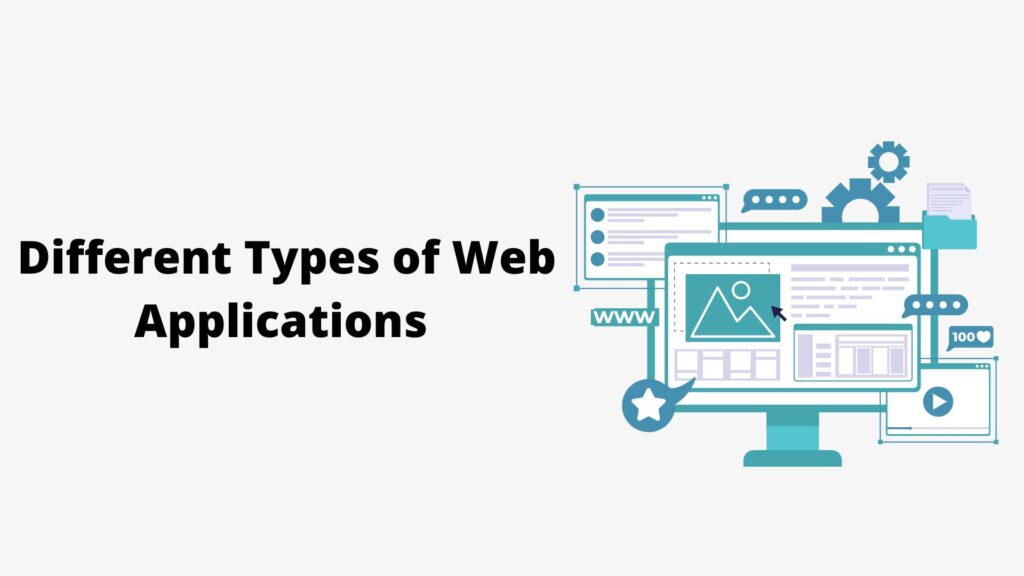What are the Different Types of Web Applications You Should Know?
Web applications has come up to help businesses to build their online digital presence for both web and smartphone users.

What are the Different Types of Web Applications You Should Know?
In today’s world, the importance of digital presence is significantly increased. The introduction of different types of web applications has come up to help businesses to build their online digital presence for both web and smartphone users.
Web applications attempt to deliver a native-like application experience on the browser. In this way, as long as users have access to an active internet connection, they can access the web applications, regardless of whether they are on a PC or smartphone.
In the wake of the increased popularity of web applications, many organizations are considering web application development to strengthen their digital presence. But due to the lack of different types of web applications, they often struggle to choose the best one for them.
Here in this blog, we will walk you through the different types of web applications to help you choose the best one for you.
So, let’s get started.
Different Types of Web Applications
There are 9 different types of web applications. Let’s discuss them one by one:
1. Static Web Applications
This is one of the most common and simplest types of web applications.
In the nutshell, static web applications are those that display very little content and flexibility is something that is not the cup of tea for static web apps.
Static apps can display the content without fetching the content from the server which results in instant loading of web applications.
These apps are developed using the most common programming languages such as HTML, CSS, and JavaScript.
The most advanced capability of static web apps is that they can also add GIFs and videos to boost user engagement. Due to this fact, the process to update the web application becomes tougher. When you opt to update the web applications, first you have to update the HTML code, then CSS, and at last JavaScript.
Professional portfolios and digital curriculums are among the best examples of static web apps. In addition to that, a landing page displays brief information about the company.
2. Dynamic Web Applications
Dynamic web applications are more complex when compared to static web applications.
This web application displays the content in real-time in response to the user’s request and server response. It generally has an administrative panel called CMS which enables the site owners to update or delete the content ranging from images and text.
Many different programming languages are responsible for the development of dynamic web apps. PHP and ASP are the most common languages used for development.
The process of making changes in the dynamic apps is simple and won’t be required to access the server.
The best example of dynamic web apps is Netflix. Whenever you visit the website, it displays the content based on your choice.
3. Single Page Web Applications
Single web applications are primarily running within the browser and set the users free from page loading hindrances.
Email web apps are the best example of single-page web apps where the headers and sidebar will stay intact. Also, the cost of single-page web apps is cheaper in comparison to traditional web apps and also faster.
4. Multiple Page Web Applications
Multiple page web apps include multiple pages and whenever the user visits the web apps, content reloads from the servers.
The best example of multiple-page web apps is Amazon. Whenever a user visits Amazon, adds a product to the cart, and hits the checkout button to checkout, it will redirect them to another page where they can select the delivery address and make the payment.
5. Animated Web Applications
As the name suggests, animated web apps support animations and synchronizations. They are primarily connected to FLASH technology. The purpose of these web apps is to allow businesses to represent their services using various animated effects.
Animated web apps are developed using several programming languages such as HTML5, CSS, JavaScript, FLASH, and SVG.
The biggest drawback of working with animated web apps is that they are very poor in terms of SEO and often struggle to secure their ranking on Google Search Engine.
6. Content Management System (CMS)
Have you heard the name WordPress? It is one of the most popular content management systems.
Let’s put the example aside for a while and move on to discuss the definition of the Content Management System (CMS).
To be put into simple words, a content management system is used to allow people to create, modify and update the web page without acquiring any technical skills. Blogging can be seen as the most usages of CMS these days.
In addition to WordPress, other examples of the content management system (CMS) include Drupal, Joomla, and so on.
7. E-Commerce Web Applications
Those web apps that facilitate online sales and purchases of goods over the internet are known as e-commerce web apps.
The development of the eCommerce web application is a tedious process due to the integration of the different payment methods such as Wallets, debit/credit cards, and so on.
In addition to that web apps also have to offer the user the facility to add or remove products, handle payments efficiently, user-friendly interface, and so on which further increases the development complexity.
By considering the complexity of eCommerce web application development, the best thing you can do to develop such a web app is to hire a web application development company with previous expertise in eCommerce web app development.
We are a web development agency that helps companies achieve their goals by creating websites that are both visually appealing and perfectly functional. We specialize in WordPress, Drupal and other open-source platforms. Our team of designers, programmers and project managers can handle both small and large projects from start to finish (with emphasis on total creative control).
8. Portal Web Applications
Portal web apps are those that are accessible over the web browser and provide information from multiple sources such as email, online forums, search engines, and so on.
The biggest feature of the portal web app is that it allows organizations to scale and offer them personalized access and user-focus navigation depending on their needs.
When talking about the different types of portal web apps, client portals, patient portals, and university portals are some of the most common names that come to mind.
The most common example of the portal web application can be thought of as Coursera and Udemy.
9. Progressive Web Applications
The term progressive web application, or PWA, can also be used to refer to cross-platform web apps. Such web apps heavily rely on the latest browser APIs, features, and progressive enhancement methods to deliver the user’s native-like mobile experience.
The primary reason behind the increased popularity of progressive web applications is that they come at a pretty impressive speed and can be adapted easily. Another benefit is that they can be accessed even with a bad internet connection without experiencing any problem related to page loading.
In PWAs, the primary function is to create an experience similar to native apps in the browser, regardless of which device a user is browsing on.
Final Take
These were a few of the different types of web applications that you can opt for to develop your web app. The selection of which type of web app to develop is completely subject to your requirements. Understand your requirements and decide which type of web app is best for you. The next step would be to hire a web development company that can translate your requirement for a web app into a feasible solution.







